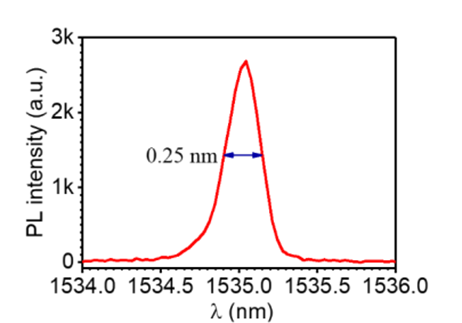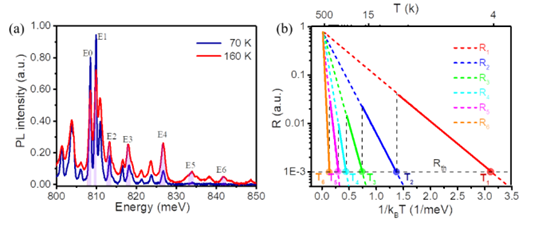Prof. Ning Cunzheng, dean of College of Integrated Circuits and Optoelectronic Chips, Shenzhen Technology University (SZTU), and his research team published a paper titled “Self-optimized single-nanowire photoluminescence thermometry” in Light: Science & Applications, together with a research team from Department of Electronic Engineering, Tsinghua University. Prof. Ning Cunzheng is the corresponding author and SZTU’s Associate Researcher Liang Zhang is the first author. The full text of the paper can be found at: https://www.nature.com/articles/s41377-023-01070-0.
The research team developed a single erbium-chloride-silicate (ECS) nanowire for temperature sensing, which can achieve a wide temperature range measurement from 4 K to 500 K. By acquiring one frame of spectrum, researchers are able to construct many (e.g., six) temperature response functions and realize the self-optimized temperature response function selection for different temperature measurement targets by a computer program. This is the first time that the self-optimized selection of temperature response functions and fluorescence temperature measurement are combined to ensure the optimal temperature measurement over a wide temperature range.

Spectrum of a single Stark sub-peak originated from 4I13/2 levels at 4 K [Photo/https://www.nature.com/articles/s41377-023-01070-0]
In this experiment, a unique rare-earth silicate alloy (erbium chlorosilicate, ECS) nanowire is used as the luminescent material, which was discovered by Prof. Ning’s team more than 10 years ago. In this study, the growth process was optimized to obtain near-perfect single-crystal nanowires, whose strong luminescence makes a single nanowire sufficient as a fluorescent substance for temperature measurement, and the high-quality material emits extremely narrow spectral lines, which can be measured at very low temperatures and small temperature changes.

(a) Spectra between 800 meV (1.55 μm) and 850 meV (1.46 μm) showing key spectral peaks selected to construct PLIRs; (b) Temperature dependence of various PLIRs, R1 through R6, with both temperature (top axis) and inverse temperature scaled by the Boltzmann constant (low axis). [Photo/https://www.nature.com/articles/s41377-023-01070-0]
The single-nanowire photoluminescence thermometry (PLT) and the proposed optimization strategy overcome many existing challenges and could fundamentally impact nano-based PLT and related applications such as single-cell thermometry.
Drafted by Daisy(姚琦)/ International Cooperation & Student Affairs Office
Revised by International Cooperation & Student Affairs Office
Edited by International Cooperation & Student Affairs Office
